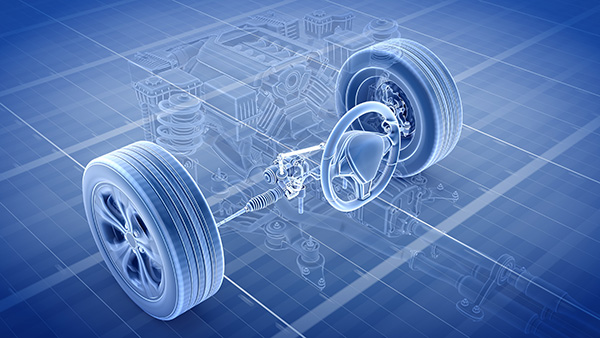
Ever stepped into a brand-new car, gripped the steering wheel, and immediately noticed something felt off? Maybe the steering feels lighter or more responsive compared to your older vehicle. You're not imagining things—modern steering systems are vastly different from the ones in cars just a couple of decades ago. But why? What’s changed? Understanding the evolution of car steering systems can reveal why newer cars feel so different to drive and why manufacturers have made these changes in the first place.
The Shift from Hydraulic to Electric Power Steering
One of the most significant changes in modern cars is the widespread use of electric power steering (EPS). Traditionally, most vehicles used hydraulic power steering (HPS), which relied on a hydraulic system driven by the car’s engine to assist with turning the wheels. This system gave a heavier, more "connected" feel to the road, which many drivers preferred. You could actually feel the car responding to the road conditions through the steering wheel, giving a sense of control and engagement.
However, hydraulic systems came with drawbacks, such as requiring constant maintenance (fluid checks and changes) and being less fuel-efficient. EPS, which replaced the hydraulic pump with an electric motor. This system offers smoother operation, reduced weight, and increased fuel efficiency since it doesn’t draw power from the engine. However, the trade-off is a steering feel that many drivers describe as "lighter" or less responsive than hydraulic systems.
So, why the switch? EPS isn’t just about fuel efficiency. It also integrates better with modern technologies like driver-assistance systems. Adaptive cruise control, lane-keeping assist, and automatic parking all rely on the precision and adaptability that electric power steering provides. In short, it's not just about steering anymore—it’s about creating an overall driving experience that’s safer and smarter.
The Role of Technology in Steering Sensitivity
When you hop into a newer car, you may also notice that the steering feels more sensitive or responsive than what you're used to. The rise of computer-assisted technologies heavily influences modern steering systems. These technologies adjust the level of steering assistance based on the speed of the vehicle, road conditions, and even your driving habits.
At higher speeds, for example, you might feel the steering tighten up to offer more stability, while at lower speeds (like in a parking lot), the steering might become feather-light for easy maneuvering. This variable steering is controlled by software, meaning that manufacturers can tailor the feel of the steering to match different driving environments.
But this shift towards digital control also means a loss of that direct mechanical feedback many drivers enjoyed. You may not feel the bumps, grooves, or resistance of the road as much because the computer is actively managing how much of that information gets sent back through the wheel. It’s a balancing act—offering convenience without sacrificing too much of that "connected" driving experience.
Why Some Drivers Miss the Old Feel
For drivers who grew up driving cars with older hydraulic systems, the shift to electric steering can feel like something’s missing. That heavy, more direct feedback from the road gave drivers confidence, especially on winding roads or during adverse conditions. It was as if the car was communicating with you, letting you know exactly what was happening beneath the tires.
With modern systems, that feedback can sometimes feel muted. The steering might be lighter and require less effort, but it also feels less involved. For some, it’s a welcome change—making city driving, parking, and long trips easier on the arms. For others, it’s the loss of a tactile connection to the road that made driving more engaging.
The reality is that manufacturers are catering to different priorities. Where driving once required more physical input and awareness, today’s cars aim to simplify and enhance the driving experience with technology that reduces fatigue and enhances safety. Whether or not this makes for a more enjoyable ride depends largely on personal preference.
Advanced Steering Features You Didn’t Know About
While most of us only think about steering as turning the wheel, modern systems are far more sophisticated than they appear. Many new cars come equipped with variable-ratio steering, which adjusts how much the wheels turn in response to your input. This allows for precise, responsive handling at higher speeds and easy, fluid movement in tight spaces without needing to constantly crank the wheel.
There's also steer-by-wire technology on the horizon. This system eliminates the mechanical link between the steering wheel and the wheels altogether. Instead, it relies entirely on electronic signals to control steering. Though still in its early stages, this technology has the potential to revolutionize steering, making it even more customizable for different driving conditions or personal preferences.
As steering systems evolve, the goal isn’t just about convenience or ease—it’s about integrating with the suite of safety features that modern cars now boast. Lane-keeping assist, for example, gently nudges the steering wheel to keep the car in its lane, and autonomous driving features depend on steering systems that can quickly and precisely adjust to ensure the car stays on course.
Want to keep your steering system in top condition? Schedule a maintenance check at Guthrie's Auto Service. Our experts will inspect, repair, and maintain your car’s steering to ensure it handles the road exactly how you want it to.